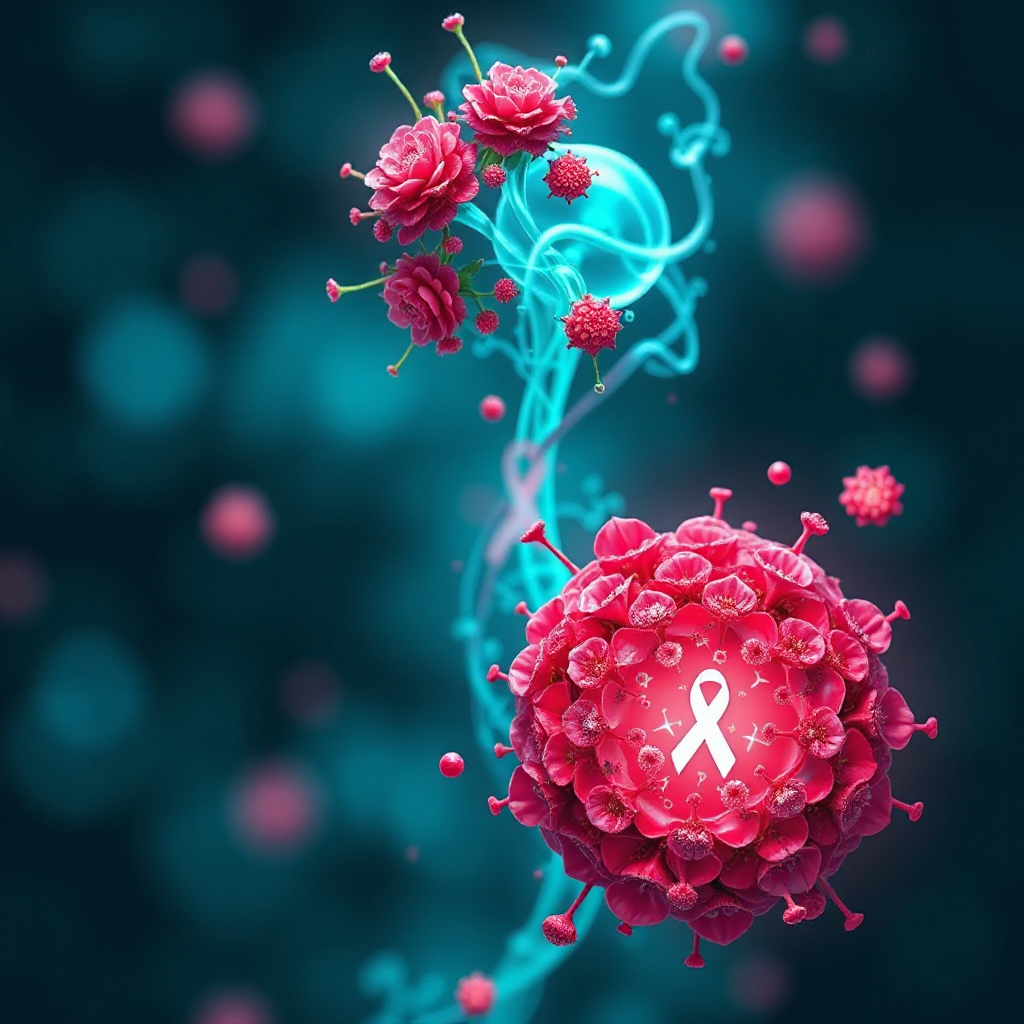Angioimmunoblastic T-Cell Lymphoma: What to Know After a Diagnosis

Angioimmunoblastic T-cell lymphoma is a rare and aggressive form of non-Hodgkin lymphoma. It accounts for only 1-2% of all non-Hodgkin lymphoma cases in the United States, making it an uncommon type of blood cancer. This disease primarily affects T cells, which play a crucial role in regulating your immune system. When these cells malfunction, your body’s ability to fight infections and maintain immune balance weakens. Recognizing the symptoms early can improve treatment outcomes and help manage the disease more effectively.
Key Takeaways
Angioimmunoblastic T-cell lymphoma is a rare and fast-growing blood cancer. It mainly harms T cells, making the immune system weaker.
Common signs are ongoing fever, night sweats, weight loss, and swollen lymph nodes. Spotting these early can help with better treatment.
People over 60 or with weak immune systems are at higher risk. Knowing this can help find the disease sooner.
See a doctor quickly if your symptoms stay or get worse. Finding it early is key for good treatment and better results.
Talk to experts for the right diagnosis and treatments like chemotherapy or immunotherapy. Acting fast can help control the disease well.
Understanding Angioimmunoblastic T-Cell Lymphoma
What is Angioimmunoblastic T-cell lymphoma?
Angioimmunoblastic T-cell lymphoma is a rare type of non-Hodgkin lymphoma that originates from follicular helper T cells. It typically affects individuals over the age of 60 and shows a slight male predominance. This disease often presents with unusual symptoms, such as generalized rashes, persistent fevers, and night sweats. You may also notice autoimmune-related issues, including hemolytic anemia or thyroid abnormalities. These features make it distinct from other lymphomas and highlight the complexity of its diagnosis and treatment.
How it affects the immune system
This lymphoma disrupts your immune system by causing uncontrolled growth of abnormal T cells in lymph nodes and other lymphatic tissues. These abnormal cells infiltrate the lymph nodes, leading to enlargement and tenderness. As a result, your normal T-cell functions weaken, impairing your body's ability to regulate immune responses. This makes it harder for you to fight infections and maintain immune balance.
Key characteristics and risk factors
Angioimmunoblastic T-cell lymphoma has several defining characteristics:
It is associated with autoimmune disorders and can lead to B-cell proliferation.
Common symptoms include lymphadenopathy, rash, fevers, and night sweats.
Certain factors increase your risk of developing this disease:
Weakened immune system: Conditions like HIV/AIDS or being an organ transplant recipient.
Autoimmune disorders: For example, Sjogren syndrome.
Risk Factor | Description |
|---|---|
Age | Age > 60 years is a significant risk factor. |
Performance Status | ECOG ≥ 2 indicates poorer performance status. |
Elevated LDH Levels | High LDH levels are associated with prognosis. |
Understanding these characteristics and risk factors can help you recognize potential warning signs early.
Symptoms of Angioimmunoblastic T-Cell Lymphoma

Common symptoms
Persistent fever
You may experience a persistent high fever that doesn’t go away over time. This fever often signals an underlying issue, as it is one of the most common symptoms of Angioimmunoblastic T-cell lymphoma. It can last for weeks and may not respond to typical treatments for infections.
Night sweats
Severe night sweats are another hallmark symptom. These episodes can drench your clothes and bedding, making it difficult to sleep comfortably. If you notice this happening frequently, it’s important to pay attention, as it could indicate a serious health concern.
Unexplained weight loss
Losing weight without trying is a red flag. This type of weight loss isn’t linked to changes in diet or exercise. It often occurs alongside other symptoms like fatigue and fever, which are common in Angioimmunoblastic T-cell lymphoma.
Tip: If you notice these symptoms persisting or worsening, consult a healthcare professional promptly. Early detection can improve outcomes.
Lymphatic symptoms
Swollen lymph nodes
Swelling in your lymph nodes, especially in areas like the neck, armpits, or groin, is a key symptom. These swollen nodes are usually painless but may feel tender when touched.
Enlarged spleen or liver
You might also notice discomfort or fullness in your abdomen due to an enlarged spleen or liver. This occurs as the disease progresses and affects lymphatic tissues.
Skin-related symptoms
Rashes or skin lesions
Skin changes are common in Angioimmunoblastic T-cell lymphoma. You may develop red, itchy patches or flat and raised lesions. These rashes often appear as a secondary effect of the lymphoma and may not always show direct involvement of the skin upon biopsy.
Itching (pruritus)
Persistent itching, also known as pruritus, can be bothersome. It often accompanies skin rashes and may feel intense, disrupting your daily activities.
Note: Skin symptoms can vary widely. If you notice unusual changes in your skin, it’s worth discussing them with your doctor.
Less Common Symptoms and Complications

Blood-related symptoms
Anemia and fatigue
You may experience anemia, which occurs when your red blood cell count drops significantly. This can lead to fatigue, a persistent feeling of exhaustion that doesn’t improve with rest. Fatigue often affects your ability to perform daily activities and may worsen over time.
Increased risk of infections
Angioimmunoblastic T-cell lymphoma can weaken your immune system, increasing your susceptibility to infections. This happens because your body’s ability to produce healthy white blood cells diminishes, leaving you vulnerable to bacteria, viruses, and other pathogens.
Tip: If you notice frequent infections or prolonged fatigue, consult a healthcare provider for further evaluation.
Autoimmune-related symptoms
Autoimmune hemolytic anemia
This condition occurs when your immune system mistakenly attacks your red blood cells, leading to their destruction. Symptoms may include pale skin, shortness of breath, and rapid heartbeat.
Other autoimmune manifestations
You might also experience other autoimmune-related issues, such as joint pain, thyroid dysfunction, or vasculitis. These symptoms arise from your immune system attacking healthy tissues.
Symptom | Description |
|---|---|
Vasculitis | Inflammation of blood vessels, causing pain and swelling. |
Hypo or hyperthyroidism | Thyroid dysfunction leading to hormonal imbalances. |
Immune thrombocytopenic purpura | Low platelet count, increasing the risk of bleeding. |
Advanced stage symptoms
Organ dysfunction
In advanced stages, the disease may cause organ dysfunction. You might notice symptoms like abdominal swelling due to fluid accumulation (ascites) or difficulty breathing caused by pleural effusion (fluid around the lungs).
Severe immune suppression
As the disease progresses, your immune system may become severely compromised. This can lead to life-threatening complications, including systemic infections and multi-organ failure.
Note: Early treatment is crucial to prevent these complications. Discuss any concerning symptoms with your doctor promptly.
Why Do These Symptoms Occur?
T-cell dysfunction and immune system disruption
The symptoms of Angioimmunoblastic T-cell lymphoma often stem from the malfunction of your T cells. These cells lose their normal functions, which weakens your immune system. This dysfunction can lead to:
Autoimmune disorders, where your immune system attacks healthy tissues.
Systemic symptoms like persistent fever and unexplained weight loss.
When your T cells fail to regulate immune responses, your body struggles to maintain balance. This disruption creates a cascade of issues, making it harder for you to fight infections and manage inflammation effectively.
Inflammatory and autoimmune mechanisms
Inflammation plays a significant role in the development of symptoms. Your immune system may become overactive, leading to autoimmune disorders. For example, autoimmune hemolytic anemia and immune thrombocytopenia are common in this condition. These disorders occur when your immune system mistakenly targets your red blood cells or platelets.
The presence of Epstein-Barr virus (EBV) can also contribute to inflammation. EBV may trigger abnormal immune responses, worsening symptoms like fever, rashes, and joint pain. This inflammatory process can further complicate your condition, making early diagnosis essential.
Tumor growth and systemic effects
The uncontrolled growth of abnormal T cells in Angioimmunoblastic T-cell lymphoma leads to widespread effects on your body. These cells infiltrate lymph nodes and other lymphatic tissues, causing:
Swelling of the spleen (splenomegaly).
Systemic symptoms such as fever, night sweats, weight loss, and skin rashes.
As the tumor grows, it impairs normal T-cell functions, leaving your immune system vulnerable. This increases your risk of infections and autoimmune complications. You may also experience organ dysfunction, such as fluid buildup in the lungs or abdomen, as the disease progresses.
Note: Recognizing these mechanisms can help you understand the importance of seeking medical attention if you notice persistent or worsening symptoms.
When to Seek Medical Attention
Recognizing red flags
Persistent or worsening symptoms
Certain symptoms should prompt you to seek medical attention immediately. These include:
Fever: A high fever that persists and does not resolve quickly.
Night sweats: Severe episodes that soak your clothes and bedding.
Weight loss: Unexplained weight loss unrelated to diet or exercise.
Fatigue: Extreme tiredness that does not improve with rest.
Swollen lymph nodes: Painless swelling in areas like the neck, armpit, or groin.
Skin rash: Red, itchy patches or lesions.
Shortness of breath: Difficulty breathing due to lung involvement or fluid buildup.
Tip: If you notice any of these symptoms worsening or persisting, consult a healthcare provider promptly.
Symptoms interfering with daily life
When symptoms like fatigue, night sweats, or shortness of breath begin to disrupt your daily activities, it’s time to act. These signs often indicate that the disease is progressing and requires medical intervention.
Importance of early diagnosis
How early detection improves outcomes
Early diagnosis plays a critical role in managing Angioimmunoblastic T-cell lymphoma. Prompt treatment can prevent the disease from advancing and reduce its impact on vital organs and body systems. Early intervention also increases the likelihood of successful treatment and better long-term outcomes.
Steps to take if you suspect AITL
If you suspect you have Angioimmunoblastic T-cell lymphoma, follow these steps:
Seek medical attention immediately if you experience related symptoms.
Undergo diagnostic tests to confirm the diagnosis and determine the stage of the disease.
Begin treatment promptly to prevent further progression.
Discuss treatment options with your doctor, including chemotherapy and steroids.
If treatment is effective, explore the possibility of bone marrow transplantation.
Consult specialists if the disease relapses or does not respond to initial treatment.
Note: Delaying treatment can lead to complications. Early action is essential for better outcomes.
Consulting a specialist
Types of doctors to consult
You may need to consult several specialists for diagnosis and treatment, including:
Hematologists
Oncologists
Lymphoma experts
Bone marrow transplantation specialists
Diagnostic tests and procedures
Doctors use various tests to confirm Angioimmunoblastic T-cell lymphoma. These include:
Surgical biopsy: A core biopsy of lymph nodes is essential for identifying cancer cells.
Imaging tests: CT, PET, and MRI scans help locate tumors and assess their spread.
Blood tests: Complete blood count and metabolic profiles evaluate your overall health.
Immunophenotyping: Identifies specific proteins on cancer cells to guide treatment.
Reminder: Accurate diagnosis often requires multiple tests. Discuss these options with your healthcare provider to ensure a comprehensive evaluation.
Angioimmunoblastic T-cell lymphoma presents with symptoms like persistent fever, night sweats, unexplained weight loss, and swollen lymph nodes. You may also notice fatigue, skin rashes, or shortness of breath. Recognizing these signs early can make a significant difference in treatment outcomes. Seeking medical advice promptly ensures timely diagnosis and care. If you experience any of these symptoms, consult a healthcare professional. Early action not only improves your chances of recovery but also helps manage complications effectively. Stay proactive about your health and prioritize regular check-ups.
FAQ
What is the survival rate for Angioimmunoblastic T-cell lymphoma?
The survival rate depends on factors like age, stage, and response to treatment. On average, the 5-year survival rate ranges from 30% to 50%. Early diagnosis and advanced therapies can improve outcomes.
Can Angioimmunoblastic T-cell lymphoma be cured?
This lymphoma is challenging to cure. However, treatments like chemotherapy, immunotherapy, and stem cell transplants can help manage the disease and prolong survival. Discuss options with your doctor.
Is Angioimmunoblastic T-cell lymphoma hereditary?
No, this lymphoma is not hereditary. It develops due to genetic mutations in T cells, often triggered by environmental factors or infections like Epstein-Barr virus.
How is Angioimmunoblastic T-cell lymphoma diagnosed?
Doctors use a combination of tests, including lymph node biopsy, blood tests, and imaging scans. These help confirm the diagnosis and determine the disease's stage.
What are the treatment options for Angioimmunoblastic T-cell lymphoma?
Treatment often includes chemotherapy, corticosteroids, and immunotherapy. In some cases, stem cell transplantation may be recommended. Your doctor will tailor the treatment plan based on your condition.
Tip: Always consult a specialist for personalized advice and treatment options.
See Also
Exploring Acute Lymphoblastic Leukemia: Symptoms You Should Know
Identifying Symptoms and Causes of Acute Eosinophilic Leukemia
Symptoms and Treatment Options for Adrenocortical Adenoma Explained
